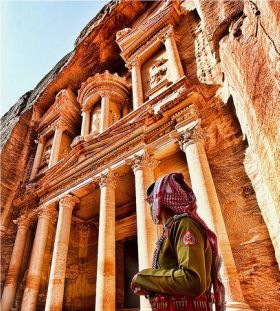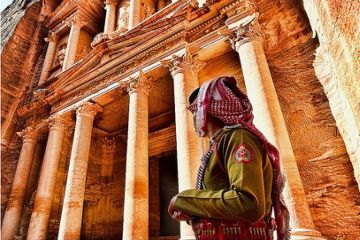
© Salim Photography/www.salimphoto.com
Here’s a case for not getting your rub-on at an ancient holy site like Petra in Jordan:
Petra has two main enemies: people and water. Named one of the wonders of the natural world in 2007, it now attracts hordes of tourists, up to 800,000 a year by some estimates, who sit on the steps of the theater and rub up against the walls of the Siq (the narrow gorge leading to Petra’s most famous temple), eroding inscriptions carved by stone masons thousands of years ago.
Oh, and for the installation of indoor plumbing, too:
